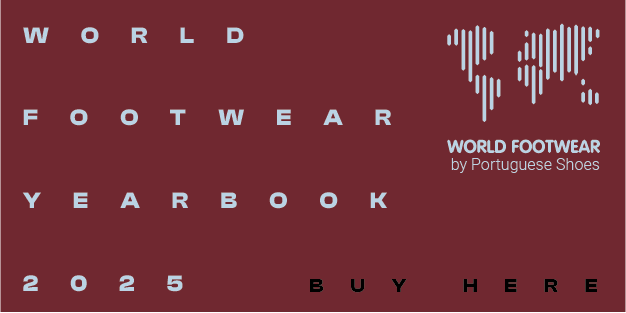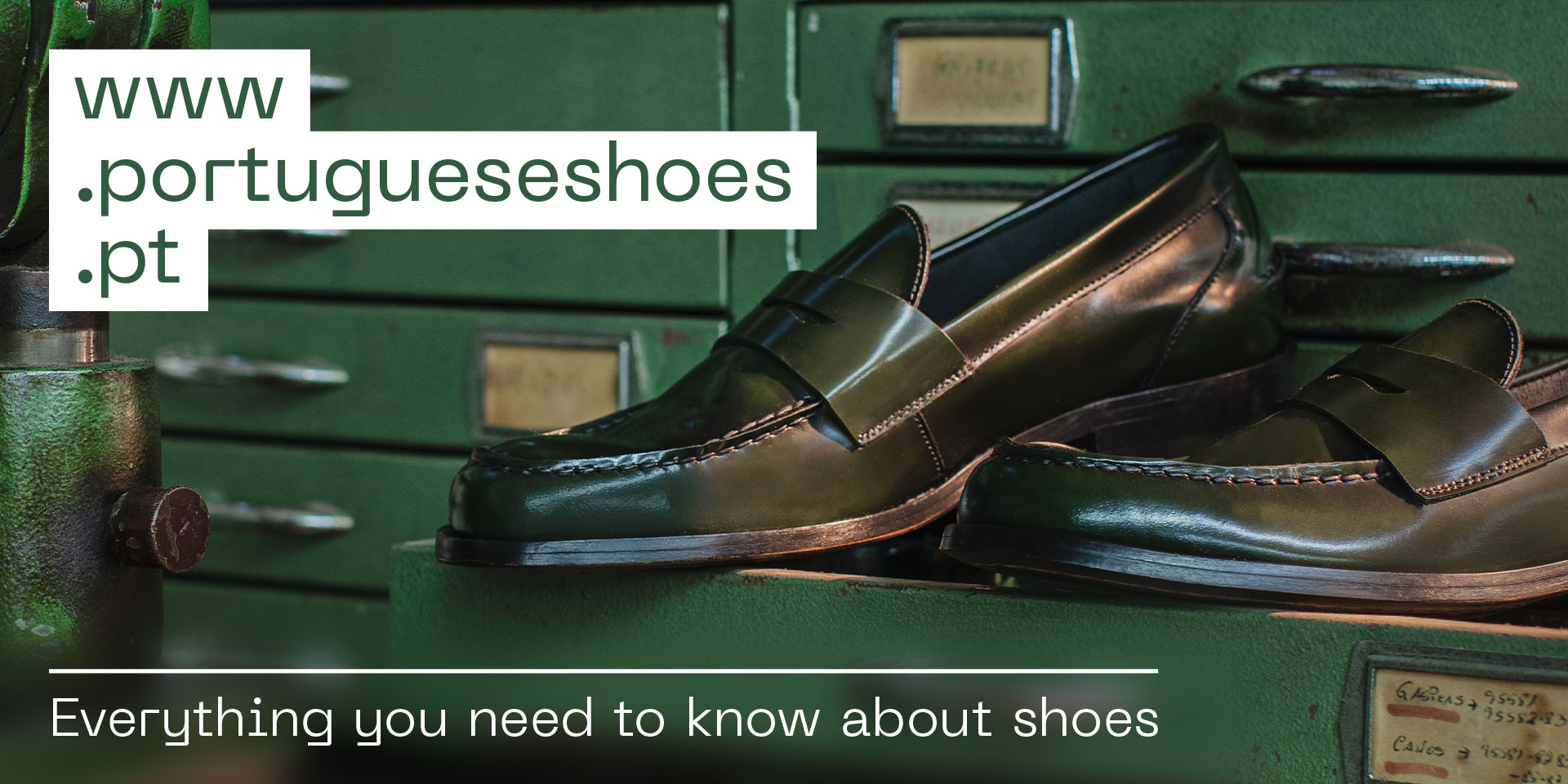Jean Pierre Renaudin, CEC’s President, live on World Footwear

The interview covers some of the pressing topics impacting the footwear industry worldwide, with a focus on the views of the European Confederation of the Footwear Industry
Despite the economic crisis and related problems impacting companies, states, and consumers, the European Union (EU-28) managed to grow its exports in quantity (5%), value (6.8%) and average price (1.8%). 75% of EU-28 exports go to other European Union countries, revealing that these are still very important markets to the European footwear industry. Imports of the EU-28 as a whole had a positive performance, as despite the increase in both quantity (7.9%) and value (2.5%) the average price is now 5.1% below the 2012 levels (9.91 euros compares to 9.91 euros).
Using this set of results as a background, we interviewed Mr. Jean Pierre Renaudin, President of the European Confederation of the Footwear Industry (CEC) and discussed the current state of the industry, the future expectations and other relevant topics, such as the Made in legislation, the World Footwear Congress taking place in November 2014 in Mexico and the TTPI negotiations, amongst others.
1. What is your view on the footwear sector’s performance in 2013?
I suppose that you refer to the EUROPEAN footwear sector, and for that the best answer can be found in the statistics, i.e. your World Footwear Yearbook’s latest edition. And if I may, I would take the opportunity to congratulate APICCAPS for this excellent and useful annual publication, which has become a MUST for any footwear stakeholder who wants to understand how globalization works in our footwear sector and where to go in search of new markets.
Coming back to your question, the internationalization has proven to be the best option for our European companies, in particular in these years of economic crisis. Of particular interest are the EU footwear exports to third countries which have increased by 31.0% in quantity and 44.2% in value from 2008 till 2013, despite some markets being still difficult to enter.
We can also appreciate a positive turn in the local markets in comparison with the 2012 negative results. Companies have tried to maintain their manufacturing prices despite the increase of leather prices, which has probably contributed to see local consumption increase in the last year.
With regards to the distribution channels, online sales continue showing remarkable numbers, and in other countries than UK, the pioneer on fashion e-sales, footwear companies have progressively joined the e-channel with excellent results.
As a conclusion I would say that 2013 has been a positive and encouraging year for our European footwear.
2. 75% of EU Member States exports go to other EU countries. Is this a concern considering the issues the economy is facing in the European Union?
I do not consider a concern that a big part of our European footwear is still sold within the EU. Again statistics show that despite the economic crisis exports to EU countries are sustained or have slightly increased, like the 3.8% of Portuguese footwear in comparison to 2012 results.
This only shows that not only third countries’ consumers appreciate our footwear, but also consumers within the EU, being EU citizen or tourists from third counties. The economic crisis has had an impact on the local consumption, but other factors have benefitted the increase of these EU exports. For instance the delocalization inside Europe: many companies hiring the manufacturing processes in third countries like China, Vietnam, etc. have switched to EU providers because of external factors, i.e. increase of labour costs, quality assurance, respect of social and environmental standards, etc.. And in this trend, Portugal and Spain have benefitted the most.
3. The main destination markets for EU-28 exports outside the Union - United States (7.0%), Russia (14.5%), Switzerland (5.4%), Hong Kong (9.1%) and Turkey (23.8%) - registered quite interesting growth rates during 2013. Are these strategic markets for the EU industry?
Any emerging medium/ high class market is interesting for our footwear industry. We produce high quality products, which are recognized worldwide, and the best example is the increase of our exports as mentioned before. Of course our companies do not only need new customers in order for their exports to grow, but also easy access to enter these markets. Unfortunately several countries like e.g. Russia, despite being Members of the WTO, still maintain important non-trade barriers, which make access to that market very difficult. And such practices are being tolerated despite being against the spirit of the WTO and the EU trade policy.
4. You said before that extra EU exports increased by 30% in volume and 40% in value since 2008, and today the European Union exports more footwear than before China joined the WTO. Which competitive factors explain the highly positive performance of the European industry?
As I previously mentioned, there is no doubt that European footwear is highly appreciated by consumers from around the world. Our products are distinctive by their design, the respect of quality and safety standards, and a good relation quality/price. European brands have a recognized value. In the last years EU companies have realized, certainly persuaded by the decrease in national consumption, about the potential of European footwear in third countries, and they have let aside any previous prejudices, like language difficulties, travelling abroad, etc. And we cannot undermine that the figures above exist despite of the many tariff and non-tariff barriers still present in many countries around the world. We should therefore be positive, and continue working with the European Commission in the establishment of a level playing field in future trade agreements, in particular in the ongoing negotiations with Japan, Vietnam, etc. and hopefully soon re-launching Mercosur negotiations.
5. The World Footwear Congress will take place in November 2014 in Mexico. It has an ambitious agenda, and will cover pressing themes for the footwear industry, such as, consumption trends, restrictive measures and access to raw materials. In your view, how do these topics impact the footwear industry in Europe?
As you know the World Footwear Congress is an initiative of the CEC created more than ten years ago, and it serves as a platform for discussing the constant changes and challenges that our industry faces since the beginning of the globalization. For this 5th edition, our Members have chosen the mentioned topics that clearly concern our companies:
- The consumption trends: In the last years internet has acquired the leading role in paving consumer trends, and providing the necessary level of transparency requested by consumers. Competition becomes higher and higher, and companies need to find not only innovative and good quality products but innovative marketing strategies.
- Restrictive measures: They play more than ever a clear barrier for the growth of our European companies, who rely in the internationalization of their products in order to increase their sales. In the Congress we would like to call footwear stakeholders to contribute to the establishment of a level playing field worldwide.
- The access to raw materials: Indeed for European footwear, leather is THE material. We are all aware of the limitations of leather in Europe, mainly caused by a reduction of meat consumption. The scarcity consequently causes a price increase that European manufacturers have difficulties to absorb in order to maintain their selling prices.
6. Taking in consideration the decreasing number of visitors to some of the main footwear industry fairs, what is the role of trade fairs nowadays?
I suppose that when you say “decreasing” you refer to the most classical fashion trade shows, because the attendance to regional fairs addressing purchase orders is on the contrary increasing.
It is true that until recently trade fairs played relevant marketing functions: they served to develop and cultivate customer relations, to search for partners, and to position the company as a whole. It is clear that the Internet has overtaken most of this marketing role by facilitating not only smart ways to exhibit company’s products but also innovative business models, communication tools, etc.
I would say that the role of trade fairs is shifting to become a more market research instrument for companies, when entering a market, and/or reconsidering new products, to get an overview of competitors, or selling new products.
However fashion products need to be seen and touched, a personal business relation will have more chance to succeed if dealt face to face than through internet or telephone, and fairs are still the best option.
What we are already seeing is a specialization/ characterization of fair shows in order to attract customers. For instance businesses can visit theMICAM in search of the latest fashion trends; GDS for a more healthy/ comfort/ high technology footwear; Who’s Next? as the rendez-vous for personal consumable goods; etc.
7. The Made in is one of the hot topics impacting the footwear industry. What will be the importance of this new legislation for the European companies, especially now that the European Parliament gave the go ahead to this new legislation?
The introduction of the mandatory origin labeling in consumer products, the so known “Made in”, clearly represents a measure in support of our European industry, its growth and the jobs creation in Europe. Its adoption will suppose the recognition of the efforts made by our companies to comply with certain levels of quality, social and environmental standards, which some companies from third countries do not respect. This labeling will also allow consumers to recognize such standards, and value the level of security requested on the production. Consumers are more and more conscious of their purchases, and want to adopt responsible decisions when choosing a product. Furthermore the origin labeling will assist the market surveillance and customs authorities to identify those companies who infringe the EU product safety rules, and will provide more transparency to our EU internal market.
Now, we just have to wait for the positive voting at the European Council in order to see “Made in” a reality. We trust that the EU Members States will respect the positive decision of the European Parliament, the institution directly representing the citizens of the EU, and will vote also in favour of the mandatory origin labeling in consumer products.
8. The TTIP (Transatlantic Trade and Investment Partnership) negotiations, one of the most important upcoming free trade agreements, are expected to show progress during 2014.
o What are your expectations around the negotiations and the final agreement?
o Do you have any concerns relating the final conditions?
o The average applied tariff for goods imported into the EU is already very low, with more than 70% of imports entering the EU at zero or reduced tariffs. Considering this and the fact that both the US and the EU have similar product specialization, what will be the main benefits for the sector in Europe, as a consequence of the implementation of such agreement?
The TTIP is indeed one of the major priority markets for our European footwear, with a population of 314 million consumers and a GDP per capita of 50.000 USD. Consequently the CEC is closely following the negotiations with the European Commission in order that the future agreement does not imply restrictions or less favourable conditions to our footwear.
Both the US and the EU have been quite opened and have organised sessions with their respective stakeholders, but it will be difficult that all sectors in both parts of the Atlantic are satisfied with all the clauses, and some compromises will be required.
The European footwear main requests are:
- To low and progressively eliminate the import tariffs into US, which average is currently 37.5 % in comparison to the 8% or 17% when importing into the EU.
- To maintain the Change of Tariff Heading (CTH) for determining the preferential origin. In the US, the rules of origin for footwear follow the principle of 55% value added for determining the preferential origin, and we believe that such parameter can be subject to critical interventions by customs authorities, and can cause misinterpretation and/ or arbitrary decisions by the controllers.
- To review the US “Fur Products Labelling Act” for full traceability that imposes too many requirements in the product labelling.
- To simplify US paperwork and clearance documentation, in particular the Interim Footwear Invoice, a very complicated questionnaire, especially for SMEs.
9. The European Union has not reacted to the crisis by closing markets, but instead has kept its capacity to conclude and implemented trade agreements, such as the recent Free Trade Agreement with South Korea, and the ongoing negotiations to implement a Trade Agreement with Vietnam and Singapore. However, other regions / countries tend to impose more restrictions to free trade as a reaction to crisis. Do you fear the increase of restrictive measures and its impact on the world trade? And what can be the impact for European countries and the European footwear industry?
To close our markets will never help our industries. It is completely the wrong approach. As I mention before, there is a potential for our products in third countries, and a proof is that exports continue to increase in our sector despite of the crisis. The CEC does not want a protected EU market, but we hope that policy makers like the WTO and the EU will help us to reach the elimination of restrictions.
CEC defends an open worldwide market with level field conditions for all companies around the world. Of course what we do not agree is that for instance since January 2014 Vietnamese footwear benefits from the General System of Preferences. It does not make any sense. We can accept a Free Trade Agreement, even if Vietnam is not currently one of our priority markets, but the GSP should be terminated. Vietnamese footwear imports into EU have increased by 57% in February 2014 with respect to February 2013.
10. In your view, what will be the main challenges for the sector during the next few years? What priorities has CEC identified?
We need to promote the sustainability and growth of our European sector. We do not want to produce quantity, but quality footwear, and for that purpose CEC has identified some topics on which to work in order to help European businesses:
1) To improve access to finance for our SMEs.
2) To open key markets, ensuring the respect of the reciprocity of treatment (i.e. US, Mercorsur, Japan, Russia, etc.).
3) More and better controls at EU borders, in order to fight products not complying with minimum safety standards, as well as counterfeiting goods.
4) To attract young generations to work in the foowear sector in order keep the “savoir faire” of the current old generations.
5) To facilitate the collaboration between the companies in the EU in order to reach the balance between supply and demand in our sector.
Using this set of results as a background, we interviewed Mr. Jean Pierre Renaudin, President of the European Confederation of the Footwear Industry (CEC) and discussed the current state of the industry, the future expectations and other relevant topics, such as the Made in legislation, the World Footwear Congress taking place in November 2014 in Mexico and the TTPI negotiations, amongst others.
1. What is your view on the footwear sector’s performance in 2013?
I suppose that you refer to the EUROPEAN footwear sector, and for that the best answer can be found in the statistics, i.e. your World Footwear Yearbook’s latest edition. And if I may, I would take the opportunity to congratulate APICCAPS for this excellent and useful annual publication, which has become a MUST for any footwear stakeholder who wants to understand how globalization works in our footwear sector and where to go in search of new markets.
Coming back to your question, the internationalization has proven to be the best option for our European companies, in particular in these years of economic crisis. Of particular interest are the EU footwear exports to third countries which have increased by 31.0% in quantity and 44.2% in value from 2008 till 2013, despite some markets being still difficult to enter.
We can also appreciate a positive turn in the local markets in comparison with the 2012 negative results. Companies have tried to maintain their manufacturing prices despite the increase of leather prices, which has probably contributed to see local consumption increase in the last year.
With regards to the distribution channels, online sales continue showing remarkable numbers, and in other countries than UK, the pioneer on fashion e-sales, footwear companies have progressively joined the e-channel with excellent results.
As a conclusion I would say that 2013 has been a positive and encouraging year for our European footwear.
2. 75% of EU Member States exports go to other EU countries. Is this a concern considering the issues the economy is facing in the European Union?
I do not consider a concern that a big part of our European footwear is still sold within the EU. Again statistics show that despite the economic crisis exports to EU countries are sustained or have slightly increased, like the 3.8% of Portuguese footwear in comparison to 2012 results.
This only shows that not only third countries’ consumers appreciate our footwear, but also consumers within the EU, being EU citizen or tourists from third counties. The economic crisis has had an impact on the local consumption, but other factors have benefitted the increase of these EU exports. For instance the delocalization inside Europe: many companies hiring the manufacturing processes in third countries like China, Vietnam, etc. have switched to EU providers because of external factors, i.e. increase of labour costs, quality assurance, respect of social and environmental standards, etc.. And in this trend, Portugal and Spain have benefitted the most.
3. The main destination markets for EU-28 exports outside the Union - United States (7.0%), Russia (14.5%), Switzerland (5.4%), Hong Kong (9.1%) and Turkey (23.8%) - registered quite interesting growth rates during 2013. Are these strategic markets for the EU industry?
Any emerging medium/ high class market is interesting for our footwear industry. We produce high quality products, which are recognized worldwide, and the best example is the increase of our exports as mentioned before. Of course our companies do not only need new customers in order for their exports to grow, but also easy access to enter these markets. Unfortunately several countries like e.g. Russia, despite being Members of the WTO, still maintain important non-trade barriers, which make access to that market very difficult. And such practices are being tolerated despite being against the spirit of the WTO and the EU trade policy.
4. You said before that extra EU exports increased by 30% in volume and 40% in value since 2008, and today the European Union exports more footwear than before China joined the WTO. Which competitive factors explain the highly positive performance of the European industry?
As I previously mentioned, there is no doubt that European footwear is highly appreciated by consumers from around the world. Our products are distinctive by their design, the respect of quality and safety standards, and a good relation quality/price. European brands have a recognized value. In the last years EU companies have realized, certainly persuaded by the decrease in national consumption, about the potential of European footwear in third countries, and they have let aside any previous prejudices, like language difficulties, travelling abroad, etc. And we cannot undermine that the figures above exist despite of the many tariff and non-tariff barriers still present in many countries around the world. We should therefore be positive, and continue working with the European Commission in the establishment of a level playing field in future trade agreements, in particular in the ongoing negotiations with Japan, Vietnam, etc. and hopefully soon re-launching Mercosur negotiations.
5. The World Footwear Congress will take place in November 2014 in Mexico. It has an ambitious agenda, and will cover pressing themes for the footwear industry, such as, consumption trends, restrictive measures and access to raw materials. In your view, how do these topics impact the footwear industry in Europe?
As you know the World Footwear Congress is an initiative of the CEC created more than ten years ago, and it serves as a platform for discussing the constant changes and challenges that our industry faces since the beginning of the globalization. For this 5th edition, our Members have chosen the mentioned topics that clearly concern our companies:
- The consumption trends: In the last years internet has acquired the leading role in paving consumer trends, and providing the necessary level of transparency requested by consumers. Competition becomes higher and higher, and companies need to find not only innovative and good quality products but innovative marketing strategies.
- Restrictive measures: They play more than ever a clear barrier for the growth of our European companies, who rely in the internationalization of their products in order to increase their sales. In the Congress we would like to call footwear stakeholders to contribute to the establishment of a level playing field worldwide.
- The access to raw materials: Indeed for European footwear, leather is THE material. We are all aware of the limitations of leather in Europe, mainly caused by a reduction of meat consumption. The scarcity consequently causes a price increase that European manufacturers have difficulties to absorb in order to maintain their selling prices.
6. Taking in consideration the decreasing number of visitors to some of the main footwear industry fairs, what is the role of trade fairs nowadays?
I suppose that when you say “decreasing” you refer to the most classical fashion trade shows, because the attendance to regional fairs addressing purchase orders is on the contrary increasing.
It is true that until recently trade fairs played relevant marketing functions: they served to develop and cultivate customer relations, to search for partners, and to position the company as a whole. It is clear that the Internet has overtaken most of this marketing role by facilitating not only smart ways to exhibit company’s products but also innovative business models, communication tools, etc.
I would say that the role of trade fairs is shifting to become a more market research instrument for companies, when entering a market, and/or reconsidering new products, to get an overview of competitors, or selling new products.
However fashion products need to be seen and touched, a personal business relation will have more chance to succeed if dealt face to face than through internet or telephone, and fairs are still the best option.
What we are already seeing is a specialization/ characterization of fair shows in order to attract customers. For instance businesses can visit theMICAM in search of the latest fashion trends; GDS for a more healthy/ comfort/ high technology footwear; Who’s Next? as the rendez-vous for personal consumable goods; etc.
7. The Made in is one of the hot topics impacting the footwear industry. What will be the importance of this new legislation for the European companies, especially now that the European Parliament gave the go ahead to this new legislation?
The introduction of the mandatory origin labeling in consumer products, the so known “Made in”, clearly represents a measure in support of our European industry, its growth and the jobs creation in Europe. Its adoption will suppose the recognition of the efforts made by our companies to comply with certain levels of quality, social and environmental standards, which some companies from third countries do not respect. This labeling will also allow consumers to recognize such standards, and value the level of security requested on the production. Consumers are more and more conscious of their purchases, and want to adopt responsible decisions when choosing a product. Furthermore the origin labeling will assist the market surveillance and customs authorities to identify those companies who infringe the EU product safety rules, and will provide more transparency to our EU internal market.
Now, we just have to wait for the positive voting at the European Council in order to see “Made in” a reality. We trust that the EU Members States will respect the positive decision of the European Parliament, the institution directly representing the citizens of the EU, and will vote also in favour of the mandatory origin labeling in consumer products.
8. The TTIP (Transatlantic Trade and Investment Partnership) negotiations, one of the most important upcoming free trade agreements, are expected to show progress during 2014.
o What are your expectations around the negotiations and the final agreement?
o Do you have any concerns relating the final conditions?
o The average applied tariff for goods imported into the EU is already very low, with more than 70% of imports entering the EU at zero or reduced tariffs. Considering this and the fact that both the US and the EU have similar product specialization, what will be the main benefits for the sector in Europe, as a consequence of the implementation of such agreement?
The TTIP is indeed one of the major priority markets for our European footwear, with a population of 314 million consumers and a GDP per capita of 50.000 USD. Consequently the CEC is closely following the negotiations with the European Commission in order that the future agreement does not imply restrictions or less favourable conditions to our footwear.
Both the US and the EU have been quite opened and have organised sessions with their respective stakeholders, but it will be difficult that all sectors in both parts of the Atlantic are satisfied with all the clauses, and some compromises will be required.
The European footwear main requests are:
- To low and progressively eliminate the import tariffs into US, which average is currently 37.5 % in comparison to the 8% or 17% when importing into the EU.
- To maintain the Change of Tariff Heading (CTH) for determining the preferential origin. In the US, the rules of origin for footwear follow the principle of 55% value added for determining the preferential origin, and we believe that such parameter can be subject to critical interventions by customs authorities, and can cause misinterpretation and/ or arbitrary decisions by the controllers.
- To review the US “Fur Products Labelling Act” for full traceability that imposes too many requirements in the product labelling.
- To simplify US paperwork and clearance documentation, in particular the Interim Footwear Invoice, a very complicated questionnaire, especially for SMEs.
9. The European Union has not reacted to the crisis by closing markets, but instead has kept its capacity to conclude and implemented trade agreements, such as the recent Free Trade Agreement with South Korea, and the ongoing negotiations to implement a Trade Agreement with Vietnam and Singapore. However, other regions / countries tend to impose more restrictions to free trade as a reaction to crisis. Do you fear the increase of restrictive measures and its impact on the world trade? And what can be the impact for European countries and the European footwear industry?
To close our markets will never help our industries. It is completely the wrong approach. As I mention before, there is a potential for our products in third countries, and a proof is that exports continue to increase in our sector despite of the crisis. The CEC does not want a protected EU market, but we hope that policy makers like the WTO and the EU will help us to reach the elimination of restrictions.
CEC defends an open worldwide market with level field conditions for all companies around the world. Of course what we do not agree is that for instance since January 2014 Vietnamese footwear benefits from the General System of Preferences. It does not make any sense. We can accept a Free Trade Agreement, even if Vietnam is not currently one of our priority markets, but the GSP should be terminated. Vietnamese footwear imports into EU have increased by 57% in February 2014 with respect to February 2013.
10. In your view, what will be the main challenges for the sector during the next few years? What priorities has CEC identified?
We need to promote the sustainability and growth of our European sector. We do not want to produce quantity, but quality footwear, and for that purpose CEC has identified some topics on which to work in order to help European businesses:
1) To improve access to finance for our SMEs.
2) To open key markets, ensuring the respect of the reciprocity of treatment (i.e. US, Mercorsur, Japan, Russia, etc.).
3) More and better controls at EU borders, in order to fight products not complying with minimum safety standards, as well as counterfeiting goods.
4) To attract young generations to work in the foowear sector in order keep the “savoir faire” of the current old generations.
5) To facilitate the collaboration between the companies in the EU in order to reach the balance between supply and demand in our sector.











